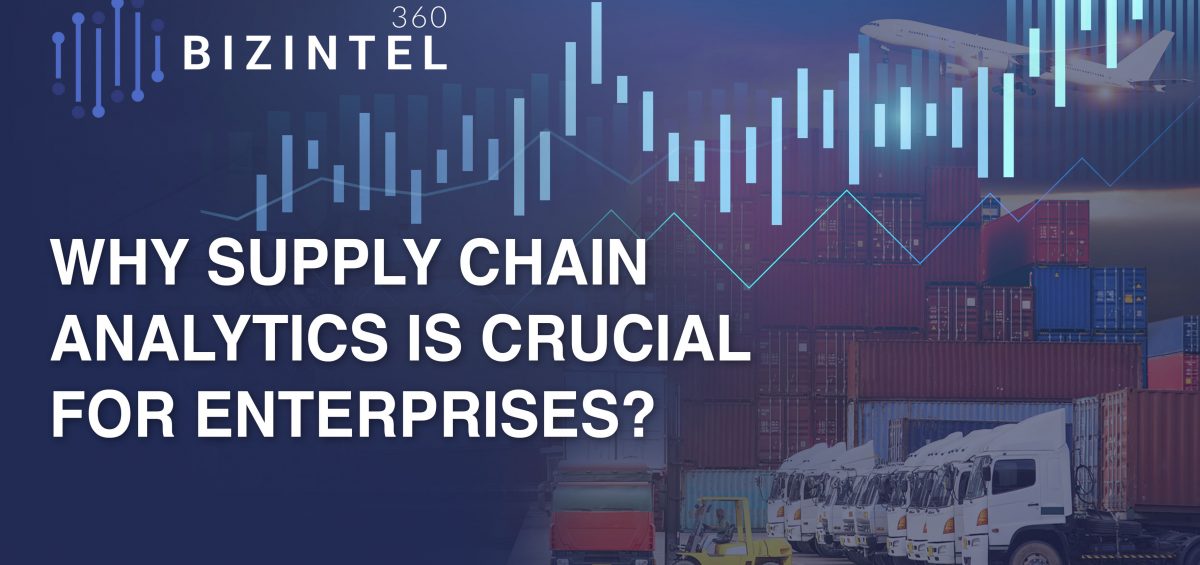Advanced Analytics can dramatically improve supply chain and logistics operations and maximize ROI. It becomes much easier to predict and act on customer requirements and hence enhances customer satisfaction and loyalty.
Predictions that the market will grow at a CAGR of 17.3% between 2019 and 2024, more than doubling show the importance of supply chain analysis. This information shows how supply chain companies are recognizing the benefits of being able to predict exactly what will happen in the future.
Using this information, supply chain leaders can address supply chain challenges, reduce costs as well as improve service levels. Predictive analytics techniques allow organizations to identify hidden patterns and trends in their data to understand market trends, identify demand, and establish appropriate pricing strategies.
About Supply Chain Analytics
Supply chain analytics is the analysis of information companies derive from the many applications associated with their supply chain, including supply chain execution systems for procurement, inventory management, order management, warehouse management and fulfillment, and transportation management
Why Supply Chain Analytics is Crucial for Business?
Supply chain analysis helps organizations of all industries make better, faster and more informed decisions about their business operations. In this way, it provides real and lasting value for the companies that use it.
These reports and dashboards help companies identify and understand their potential risks, improve their planning, optimize their inventory management, and better meet the high expectations of their customers. For example, analytics software can flag the risk, considering that a typical transportation provider is delivering a shipment late compared to the previous month. This could not only pick up on this pattern, but could show the potential for continued delays. The solution may measure the impact of such delays, including the number of potential late deliveries and the cost of chargebacks/returns.
Analytics can improve planning with more accurate forecasts, which lets you keep all operational pieces in place to meet expected volumes.
If a retailer sees a steady increase in sales, and the holidays are approaching, it can place larger purchase orders with suppliers and add more contractors to its warehouse, so it may keep up with the growth of orders during the critical holiday stretch. ready for If there is a supplier that lacks the capacity to accommodate these large orders, the retailer can look for alternatives while he still has time.
Role of Supply Chain Analytics
Supply chain analysis makes it possible for companies to collect, evaluate and act on the data generated by their supply chains. This allows them not only to make quick adjustments, but to make long-term strategic changes that will give the business a competitive advantage. Because supply chains often span the globe and can include hundreds of distinct entities, it is nearly impossible to manage this information manually or via spreadsheets. At least, it’s extremely inefficient.
Some examples of supply chain analysis include demand planning (using historical data and other factors to predict what customers will order); sales and operations planning (producing and/or purchasing goods that an organization needs to cover forecasted demand); and inventory management (tracking through item sales and which SKUs are needed to refill it).
Evolution of Supply Chain Analytics
In the past, analytics were mostly limited to statistical analysis, which helped organizations predict demand and some of the key KPIs that measure the success of a business. In the early 2000s, widespread adoption of ERP systems followed, which centralized data and had business intelligence features that allowed companies to better understand the performance of their supply chain networks. This helped businesses expect problems and lower expenses while meeting customer demand.
Since then, continuous advances in technology–along with the popularity and capabilities of cloud-based platforms, have helped companies integrate and analyze all supply chain data. The cloud has made it easier to share information with outside parties, leading to greater collaboration between supply chain partners such as suppliers, distributors and retailers. This provides another valuable layer of visibility, as various stakeholders in the supply chain can receive real-time alerts about delivery problems, delays from suppliers, quality control issues and other changes affecting them. Today, businesses can also take advantage of recent inventions, such as machine learning and cognitive computing, to gain deeper insights and more accurate forecasts.
About Bizintel360
BizIntel360, a truly self-service big data analytics solution that combines the advantages of the cloud with the advanced capabilities of today’s data warehousing and visualization solutions.
With Bizintel360 analyze and visualize data to discover actionable insights for decision making. Get predictive analytics with real time data. Find patterns, trends, churns and many more metrics to empower your business.






